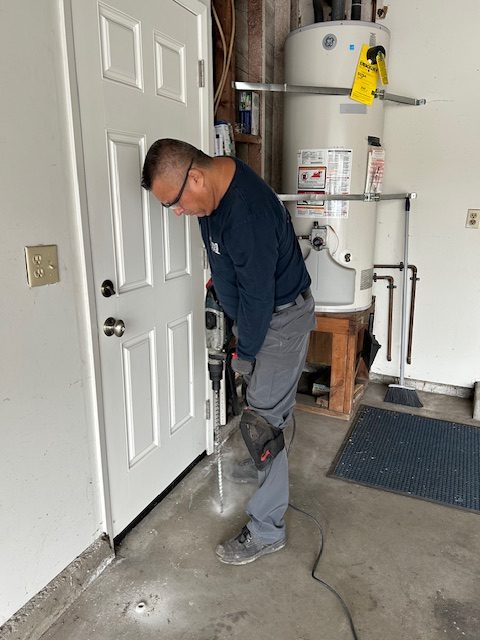Comparing Foam and Soil Treatments: Pros and Cons
When it comes to termite control, two of the most widely used methods are foam treatment and soil treatment. Both are designed to target termites at the source, but they differ in application, effectiveness, and long-term benefits. Since termites can cause extensive structural damage when left unchecked, selecting the right method is essential for ensuring lasting protection.
Each option has strengths and limitations. The best choice depends on the structure of the home, the severity of the infestation, and environmental conditions. Below, we explore how each method works, the advantages and drawbacks, and why professional guidance is critical for determining the most effective solution.

Understanding Foam Treatment
Foam treatment is a modern approach in termite control that uses specialized foam to reach areas where traditional liquid solutions may not penetrate effectively. This method is especially useful for targeting termites in wall voids, under concrete slabs, and other concealed spaces.
Key benefits of foam treatment include:
- Targeted application that expands into hidden areas
- High effectiveness for drywood termites nesting in wood
- Less invasive compared to trenching or drilling
- Quick action with lasting residue after breakdown
Foam treatment is increasingly popular because it directly eliminates hidden colonies without major disruption to the home. For homeowners seeking more detail, reviewing how foam treatment works provides further insight into its role in comprehensive protection.
Understanding Soil Treatment
Soil treatment is one of the oldest and most trusted methods of termite control. It involves creating a chemical barrier in the soil around the foundation, preventing subterranean termites from entering and causing damage.
Advantages of soil treatment include:
- Long-lasting protection that can span years
- Continuous coverage surrounding the foundation
- Proven reliability against destructive subterranean termites
- Effectiveness as both preventive and corrective treatment
This approach has stood the test of time because it establishes a protective shield against some of the most damaging termite species. However, it requires precise application and ongoing monitoring to ensure the barrier remains intact.
Pros and Cons of Each Method
Both foam treatment and soil treatment can be highly effective in termite control, but each method has its own set of strengths and weaknesses that should be considered carefully before deciding which option to use.
Foam Treatment Pros:
- Works exceptionally well for hidden infestations in wall voids, crawl spaces, and under slabs
- Requires minimal disruption to the home’s structure during application
- Provides targeted results that address termites directly at their source
- Highly effective against drywood termites, which are difficult to manage with soil treatments
Foam Treatment Cons:
- Coverage is limited to treated areas rather than offering whole-structure protection
- Residual effect is typically shorter-lived compared to soil barriers
- Best suited for localized issues rather than widespread or recurring infestations
Soil Treatment Pros:
- Offers long-term structural protection, often lasting for years when applied properly
- Creates a continuous chemical barrier that subterranean termites cannot cross
- Effective as both a corrective and preventive measure, especially for new construction
- Provides comprehensive coverage around the entire foundation of the property
Soil Treatment Cons:
- Application often requires trenching or drilling around the foundation, which can be invasive
- Less effective for termites nesting above ground, such as those inside wood structures
- Effectiveness is influenced by soil type, moisture, and application precision
By weighing these pros and cons, it becomes clear that foam treatment is ideal for precise, hidden infestations, while soil treatment delivers long-lasting and wide-reaching protection. In some cases, combining both approaches ensures the most complete defense against termite damage.
Factors to Consider When Choosing
Several important factors should guide the choice between foam and soil treatments:
- Type of termite: Foam works well for drywood termites, while soil treatment targets subterranean termites effectively.
- Extent of infestation: Foam may resolve smaller, isolated colonies, whereas soil barriers handle widespread problems.
- Home structure: Homes with difficult-to-access areas may benefit more from foam applications.
- Environmental conditions: Moisture influences termite behavior significantly. Learning about the role of moisture control helps explain why soil and environment must be factored into the treatment choice.
- Desired level of protection: For homeowners wanting preventive and corrective solutions, soil treatment is often preferred.
Carefully evaluating these considerations with a pest management professional ensures the selected method matches the property’s specific needs.
Why Professional Guidance Is Essential
The effectiveness of both foam and soil treatments relies on precise application and a strong understanding of termite behavior. Attempting these methods without training can leave gaps in protection and allow termites to persist undetected.
Professionals bring the tools, expertise, and experience needed to identify entry points and ensure treatments are applied thoroughly. In many cases, they recommend combining foam and soil treatments for layered protection that addresses both active infestations and future risks. This comprehensive approach not only delivers immediate results but also safeguards the property against long-term damage.
Safeguard Your Property the Right Way
Termite infestations require effective and carefully chosen solutions. Both foam treatment and soil treatment have unique strengths, and each can play an important role when applied correctly. For tailored termite control strategies that ensure reliable protection, contact Elite1 Termite Control, Inc. and protect your home from costly damage.

